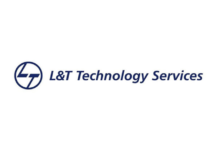The way we work has changed completely over the past few weeks. Organizations have quickly adopted work-from-home policies to ensure organizational continuity, and despite economic uncertainty, some businesses and industries are experiencing high hiring demands. As a result, managers are trying to incorporate hiring models that fit the current virtual landscape.
According to a recent forecast by Global Workplace Analytics, by the end of 2021, 25-30 % of the workforce will spend multiple days working from home every week. Although the full impact of COVID-19 needs to be seen, as long as businesses encourage remote operations, they will also need to encourage remote hiring. In the light of all that, talent leaders should take note of some established best practices for seamless virtual interviews:
1. Don’t Compromise Standards Just Because the Interview Is Virtual
Virtual meetings often have an unspeakable sense of informality. Despite this, the rigidity and expectations of the interview should remain as if the process were being conducted face to face. Instead of formulating a new process and setting standards for virtual interviews, remote hiring should reflect in-person practises as closely as possible.
As Barry Deutsch, IMPACT Hiring Solutions partner and co-author of You’re Not The Person I Hired, told Forbes, “Most companies do a terrible job preparing managers and executives to hire effectively, including remotely interviewing candidates.” It’s important, then, to establish clear guidelines for managers to follow as they embark on remote recruiting initiatives.
We know that open communication with candidates before, during and after the interview is the key to creating a great candidate experience in a traditional hiring process and the same holds with virtual interviews. Transparency is just as valued in the context of a virtual interview.
Also, be sure to extend the same level of support and courtesy as you would have during the in-person hiring process. Share the meeting invites you with a lot of notice — at least 48 hours in advance. Provide support should the candidate encounter any issues with video conferencing platforms or other virtual interview software.
When candidates know what to expect and are motivated, they feel more comfortable with the process — and more respected by their potential employer. That matters: the culture of the company is a key consideration in the employment decisions of many candidates. According to the TopResume survey of 2019, culture is second only to compensation as employees consider job offers.
2. Pay Attention to the Details
In the first case, the candidate’s preparation should be noted, just as it would be in a face-to-face interview. While at-home interruptions have become more or less a fact of life, candidates should still be unable to interview best practises. This includes being on time and testing the platform before the interview.
Also, be sure to take note of the candidate’s surrounding environment and attire. Candidates should ensure that the background of their spaces is appropriate and as free of distraction as possible, and should act following the same standards of grooming and dressing as they would do for an in-person interview. A cluttered background or casual attire might suggest a candidate isn’t taking the process seriously or lacks attention to detail.
Gauging the personality of a candidate can be particularly difficult when you communicate through a screen. Keep a close eye on personal mannerisms that can give you some insight into how the candidate thinks or feels. Much communication is non-verbal, so paying attention to a candidate’s facial expressions, gestures, and body language can go a long way in assessing their fitness.
3. Plan Ahead
Despite months of experience with virtual communication platforms like Zoom and Skype, technical glitches are still common — and sometimes they’re out of our hands. Zoom has reported dozens of privacy and reliability problems, and with 300 million participants meeting daily using the platform, connectivity issues are bound to arise from time to time.
That’s why it’s still a good idea to have your backup in place. In the case of system failure, exchange phone numbers with the candidate before the start of the interview. That way, if technology fails, you still have a way to get in touch.
Despite the frustrations they cause, technological challenges can also be a great opportunity to see how candidates respond to issues. If glitches arise, pay attention to whether the candidate becomes flustered or calm and takes the lead. How are they actively trying to solve the problem, if at all? How a candidate carries themselves in this situation can tell you a great deal about how they’ll perform under pressure in your organization.
While full-time remote work for everyone may be a temporary response to the pandemic, remote hiring is likely to stay here. Digital communication platforms provide an accessible way for the company to connect with top talent around the world. Building an effective remote hiring process, you can ensure business continuity under almost any circumstance and emerge from COVID-19 with a stronger, smarter organization..






